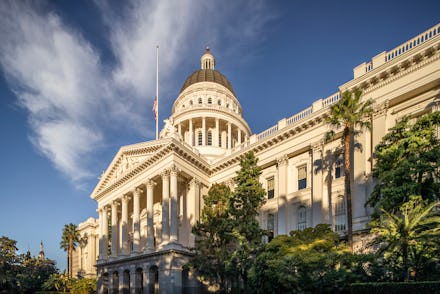There's a huge race gap in California schools. This ballot measure hopes to change that

The California legislature has taken a big step toward making public education in the state more equitable. Lawmakers voted Wednesday to overturn a ban on affirmative action enacted nearly 25 years ago, which prohibits public institutions like universities and colleges and government agencies from evaluating applicants based on race or gender. Because the bill passed the state Senate, voters will now consider the ballot measure in November's election.
The move comes amid a national reckoning with racism in its many forms. Across the country protesters are pushing for changes that address institutional racism at the local, state, and federal level. This includes tearing down statues glorifying Confederate soldiers, pushing to defund the police, and acknowledging and addressing how Black and brown folks are tired of having to constantly push back against systems of oppression.
This newest piece of legislation aims to increase the number of Black and brown students at California's educational institutions, as for years the racial educational gap has been increasing in the state. "Equal opportunity is deeply rooted in the American ideals of fairness, justice, and equality," the bill's text reads. "Programs to meet the goals of equal opportunity seek to realize these basic values. Equal opportunity not only helps individuals, but also helps communities in need and benefits our larger society."
Education has long been touted a pathway to economic security and wealth building, especially for Black and brown families. But since the end of California’s equal opportunity program in 1996, fewer and fewer Black, Latinx, and Native students have been admitted to California's public universities. Researchers call this the "underrepresentation gap," finding that before the onset of the ban the gap hovered around 14.9%. In 2015, after two decades of "race-blind" policy, the underrepresentation gap topped 34.5%.
But California wasn't the only state to implement a policy that harmed its Black, Latinx, and Native students. During the 1990s, a number of states including Florida, Washington, and Michigan implemented similar strategies that overturned affirmative action in an effort not to provide preferential treatment to any students.
The problem is, as the research notes, for centuries Black, Latinx, and Native students have not enjoyed equitable access to housing, education, and economic resources. In fact, federal and state policy has purposefully excluded these demographic groups from participating fully in economic, social, and political life, which has in turn impeded their abilities to grow wealth and attain educational opportunities. This is what President John F. Kennedy had in mind in 1961 when he issued an executive order to implement affirmative action.
Critics argue that affirmative action will lead to unqualified applicants being accepted to universities or employment opportunities. But there's little evidence of this being true. In fact, because of things like redlining, discriminatory hiring practices, policing in schools, and racist belief systems that people of color are less intelligent than white people, Black, Latinx, and Native students often have to work harder than their white peers to begin with.
David McGrath, a professor of English, wrote about the need for affirmative action in order to address the history of racism in the U.S. for the Chicago Sun-Times. He wrote, "Many white employers or teachers or police or politicians think that there is no racism as long as they ignore race. In other words, if they no longer say the N-word, and don’t purposely commit acts that deride or deprive African Americans, that everything is now equal, and that nothing more needs to be done."
But ignoring race is not a solution to racism, McGrath said. He wrote that affirmative action addresses the "implicit bias of white Americans: their internalized, unconscious fears and preferences rooted in culture, society, and their upbringing." Only by bringing conversations about how to actively counteract racist thinking in institutions do those school and government agencies become less racist, he argued.
California is the most populous and racially diverse state in the country, and its public universities are considered top-tier. What happens at the ballot box in November then could go a long way toward correcting inequity in the Golden State.